| Rank |
Company |
Symbol |
Dividend Yield |
Payout Ratio |
Description |
| 1 |
Altria Group |
MO |
6.8% |
68% |
Leading tobacco company with strong pricing power and a long history of dividend payments. |
| 2 |
LyondellBasell Industries |
LYB |
9.1% |
72% |
Global chemical producer with strong free cash flow and shareholder-friendly capital returns. |
| 3 |
Verizon Communications |
VZ |
6.1% |
64% |
Telecom giant with stable subscription revenue and consistent dividend growth. |
| 4 |
United Parcel Service |
UPS |
6.6% |
96% |
Global logistics leader with resilient cash flow and long-term infrastructure investments. |
| 5 |
Alexandria Real Estate Equities |
ARE |
7.5% |
85% (FFO-based) |
REIT focused on life sciences campuses with long-term leases and high-quality tenants. |
| 6 |
Pfizer |
PFE |
7.5% |
124% |
Global pharmaceutical company with a strong pipeline but currently elevated payout ratio. |
| 7 |
Ford Motor Co. |
F |
7.0% |
48% |
Legacy automaker investing in EVs while maintaining a moderate and sustainable dividend. |
| 8 |
Walgreens Boots Alliance |
WBA |
8.9% |
90% |
Retail pharmacy chain undergoing transformation with high yield but execution risk. |
| 9 |
Dow Inc. |
DOW |
9.5% |
700% |
Materials and chemicals company with cyclical earnings and an unsustainably high payout ratio. |
| 10 |
Ecopetrol |
EC |
23.4% |
Variable |
Colombia’s state-owned oil company with high yield but significant political and commodity risk. |
| 11 |
Petrobras |
PBR |
33.1% |
Variable |
Brazil’s oil major with massive yield tied to government policy and oil price volatility. |
A curated list of large-cap companies offering the highest dividend yields, backed by stable cash flows and long-term income potential
Introduction
Large-cap dividend stocks—publicly traded companies with market capitalizations exceeding $10 billion that consistently return a portion of earnings to shareholders—are a cornerstone for income-focused investors. These stocks offer a blend of financial strength, predictable cash flow, and long-term resilience. In 2025, they’re gaining renewed attention as inflation remains elevated and market volatility persists. With interest rates fluctuating and geopolitical uncertainty clouding economic forecasts, investors are turning to high-yield large caps for steady income and downside protection. These companies often operate in essential sectors like energy, healthcare, and telecom, where demand remains stable regardless of economic cycles. This article highlights the highest dividend-paying large-cap stocks currently available, examining their yields, payout ratios, and sector positioning. Whether you're seeking passive income or portfolio stability, these dividend leaders offer a compelling mix of reliability and return.
Want expert insights from leading investment podcasts? Scroll to the end to the Podcast Transcripts📜
What Defines a High-Yield Large-Cap Stock in 2025?
A high-yield large-cap stock is typically a company with a market capitalization exceeding $10 billion that offers a dividend yield above 5%. These companies are often industry leaders with stable earnings and a long history of rewarding shareholders. Large-cap stocks like Pfizer PFE and Verizon Communications VZ fall into this category, combining scale with consistent income generation.
The Market Trends Podcast explored this in its 2025 equity income segment. ⏳ At 22:15, analysts noted, “Large-cap funds are the financial bedrock for conservative investors—steady, diversified, and built to last.” Meanwhile, the Investor Insights Podcast emphasized ⏳ at 24:05 that “mutual funds offer automatic reinvestment and professional management, while ETFs provide flexibility and tax efficiency,” reinforcing the appeal of dividend-rich large caps.
Sources:
Understanding the Risks and Rewards of High-Yield Dividend Stocks
They provide a steady stream of passive income, often outpacing inflation and enhancing portfolio stability during volatile markets. Companies like Altria Group MO and Verizon Communications VZ are known for their generous yields. High yields can also signal trouble. A declining stock price may inflate the yield artificially, masking financial distress.
The Market Trends Podcast discussed this balance in its 2025 income strategy segment. ⏳ At 22:30, analysts noted, “Liquidity favors SPY, but long-term cost favors VOO and IVV,” emphasizing the importance of evaluating total return over headline yield. The Investor Insights Podcast added ⏳ at 24:40 that “investors with higher risk tolerance may benefit from complementing large-cap ETFs with mid-cap or sector-specific funds,” highlighting the need for diversification.
Sources:
12 Highest Dividend-Paying Large-Cap Stocks to Watch in 2025
In 2025, income-focused investors are turning to large-cap stocks with exceptionally high dividend yields to hedge against inflation and market volatility. These companies span sectors like energy, healthcare, telecom, and real estate, offering a mix of stability and aggressive income potential. Below are 12 of the highest dividend-paying large-cap stocks this year, ranked by yield and supported by strong fundamentals or strategic positioning.
Dow Inc. (DOW)
Sector: Materials | Market Cap: $38B
Dividend Yield: 9.3% | Payout Ratio: 85%
Dow’s diversified chemicals business benefits from global industrial demand. Despite cyclical headwinds, its disciplined capital allocation and cost controls support a high but sustainable dividend.
LyondellBasell Industries LYB
Sector: Chemicals | Market Cap: $30B
Dividend Yield: 9.1% | Payout Ratio: 72%
LyondellBasell’s integrated petrochemical operations generate strong free cash flow. Its shareholder-first approach includes consistent dividends and opportunistic buybacks.
Pfizer PFE
Sector: Healthcare | Market Cap: $130B
Dividend Yield: 7.5% | Payout Ratio: 124%
Pfizer’s post-COVID revenue decline has pressured earnings, but its pipeline and cost-cutting efforts aim to restore profitability. The dividend remains intact, though payout levels warrant monitoring.
Walgreens Boots Alliance WBA
Sector: Consumer Staples | Market Cap: $18B
Dividend Yield: 8.9% | Payout Ratio: 90%
Walgreens is undergoing a strategic transformation, focusing on healthcare services. While the dividend is generous, execution risk and declining retail margins pose challenges.
Altria Group MO
Sector: Consumer Staples | Market Cap: $100B
Dividend Yield: 6.8% | Payout Ratio: 68%
Altria’s pricing power and loyal customer base support its high yield. Despite regulatory pressures, its dividend remains well-covered and attractive for income investors.
The Market Trends Podcast discussed high-yield strategies in its 2025 income outlook. ⏳ At 22:25, analysts noted, “Zero fees and strong tracking make FNILX a no-brainer for cost-sensitive investors,” but emphasized that individual high-yield stocks offer targeted exposure and higher income potential. Meanwhile, the Investor Insights Podcast added ⏳ at 24:40 that “investors with higher risk tolerance may benefit from complementing large-cap ETFs with mid-cap or sector-specific funds,” reinforcing the value of diversified dividend holdings.
United Parcel Service UPS
Sector: Industrials | Market Cap: $85B
Dividend Yield: 6.6% | Payout Ratio: 96%
UPS is navigating softer e-commerce volumes with cost discipline. Its dividend remains a priority, supported by long-term logistics demand and global infrastructure.
Verizon Communications VZ
Sector: Telecom | Market Cap: $180B
Dividend Yield: 6.1% | Payout Ratio: 64%
Verizon’s stable cash flow and 5G rollout underpin its dividend. While growth is modest, its yield and defensive profile appeal to conservative investors.
Alexandria Real Estate Equities ARE
Sector: Real Estate | Market Cap: $20B
Dividend Yield: 7.5% | Payout Ratio: 85% (FFO-based)
ARE specializes in life sciences campuses, benefiting from long-term leases and high-quality tenants. Its REIT structure supports a high, consistent payout.
Ford Motor Co. F
Sector: Consumer Discretionary | Market Cap: $45B
Dividend Yield: 7.0% | Payout Ratio: 48%
Ford’s EV transition is capital-intensive, but its legacy business continues to generate cash. The dividend is sustainable for now, though cyclical risks remain.
Ecopetrol EC
Sector: Energy | Market Cap: $25B
Dividend Yield: 23.4% | Payout Ratio: Variable
Colombia’s state-owned oil giant offers one of the world’s highest yields. However, political risk and commodity price volatility make it suitable only for risk-tolerant investors.
Petrobras PBR
Sector: Energy | Market Cap: $90B
Dividend Yield: 33.1% | Payout Ratio: Variable
Brazil’s Petrobras leads in offshore oil production. Its massive yield is tied to government policy and oil prices, making it a high-risk, high-reward play.
Sources:
Where the Highest Dividend Yields Live: Sector Breakdown for 2025
Energy companies like Petrobras PBR and Ecopetrol EC offer elevated yields due to strong commodity cash flows and government-influenced payout policies. Telecom giants such as Verizon VZ maintain high dividends backed by stable subscription revenue, even as growth slows. Healthcare firms like Pfizer PFE provide generous payouts supported by patent-protected drugs and global demand. Meanwhile, real estate investment trusts (REITs) like Alexandria Real Estate Equities ARE deliver high yields through income-generating properties and favorable tax structures.
The Market Trends Podcast noted ⏳ at 22:20, “Fund size and cost structure are the silent drivers of long-term performance,” reinforcing the importance of sector selection. The Investor Insights Podcast added ⏳ at 24:25 that “large-cap ETFs may lag behind small- or mid-cap funds during bull markets,” highlighting the defensive strength of high-yield sectors.
Sources:
How to Assess Dividend Sustainability Before You Invest
Start with the payout ratio—ideally below 70%—which shows how much of a company’s earnings are distributed as dividends. A lower ratio suggests more room to maintain or grow payouts. Free cash flow is equally important, as dividends are paid from actual cash, not just accounting profits. Companies like Altria Group MO and LyondellBasell LYB maintain strong cash flows that support their high yields.
The Market Trends Podcast emphasized ⏳ at 22:20 that “fund size and cost structure are the silent drivers of long-term performance,” reinforcing the need to look beyond surface-level metrics. The Investor Insights Podcast added ⏳ at 24:35 that “reinvested dividends still generate a 1099-DIV and must be reported,” highlighting the importance of tracking dividend activity.
Sources:
Final Thoughts
High-yield large-cap stocks remain a compelling strategy for income investors in 2025, especially in an environment shaped by inflation, market volatility, and uneven economic growth. By focusing on companies with proven dividend histories, strong free cash flow, and manageable payout ratios, investors can harness reliable income streams while maintaining portfolio resilience. While elevated yields from names like Petrobras or Ecopetrol may tempt risk-tolerant investors, a diversified approach across energy, healthcare, telecom, and real estate sectors helps balance income with sustainability. Ultimately, successful dividend investing isn’t just about chasing the highest yield—it’s about aligning cash flow with financial goals and evaluating long-term performance across market cycles.
🎧 Podcast Transcripts
Market Trends Podcast – Midyear U.S. Outlook: Equity Markets a Step Ahead?
⏳ 22:10 – “S&P 500 ETFs are the backbone of modern portfolios—low-cost, liquid, and built for the long haul.”
⏳ 22:15 – “Large-cap funds are the financial bedrock for conservative investors—steady, diversified, and built to last.”
⏳ 22:20 – “Fund size and cost structure are the silent drivers of long-term performance.”
⏳ 22:25 – “Zero fees and strong tracking make FNILX a no-brainer for cost-sensitive investors.”
⏳ 22:30 – “Liquidity favors SPY, but long-term cost favors VOO and IVV.”
⏳ 22:35 – “Tracking error and bid-ask spreads influence investor outcomes.”
⏳ 22:40 – “ETFs offer flexibility, but mutual funds bring structure to long-term investing.”
⏳ 22:45 – “Fund selection is about fit, not flash.”
⏳ 22:50 – “The right ETF isn’t just low-cost—it’s purpose-built.”
⏳ 22:55 – “Large-cap ETFs are the ballast in a portfolio—steady, reliable, and built for the long run.”
Investor Insights Podcast – Market Volatility: Portfolio Diversification Is Winning in 2025
⏳ 24:00 – “Passive investing through ETFs has consistently outperformed most active strategies over the past decade.”
⏳ 24:05 – “Mutual funds offer automatic reinvestment and professional management, while ETFs provide flexibility and tax efficiency.”
⏳ 24:10 – “Risk-adjusted metrics like the Sharpe Ratio help investors compare returns relative to volatility.”
⏳ 24:15 – “FNILX’s passive strategy and broad diversification make it ideal for retirement accounts.”
⏳ 24:20 – “Disciplined rebalancing helps maintain alignment with your risk tolerance as markets shift.”
⏳ 24:25 – “Large-cap ETFs may lag behind small- or mid-cap funds during bull markets due to slower growth potential.”
⏳ 24:30 – “SCHX’s broader index exposure and low turnover make it a strong contender for passive portfolios.”
⏳ 24:35 – “ETFs are more tax-efficient due to in-kind redemptions, whereas mutual funds often distribute capital gains.”
⏳ 24:40 – “Investors with higher risk tolerance may benefit from complementing large-cap ETFs with mid-cap or sector-specific funds.”
📌Read More About:
Top Large-Cap Stocks- https://stockbossup.com/pages/topics/large-cap
What Are Large US Cap Stocks?- https://stockbossup.com/pages/post/39168/what-are-large-cap-stocks-a-complete-guide-to-big-companies-in-the-u-s-market
Do All Large-Cap Companies Pay Dividends?- https://stockbossup.com/pages/post/39151/do-all-large-cap-companies-pay-dividends-understanding-dividend-policies
Big Dividend Stocks- https://stockbossup.com/pages/post/39152/best-big-dividend-stocks-for-high-yield-returns
What is the Large-Cap Dividend Strategy?- https://stockbossup.com/pages/post/38760/what-is-the-large-cap-dividend-strategy
10 Best Large-Cap Dividend Stocks for Reliable Income and Growth in 2025- https://stockbossup.com/pages/post/39232/10-best-large-cap-dividend-stocks-for-reliable-income-and-growth-in-2025



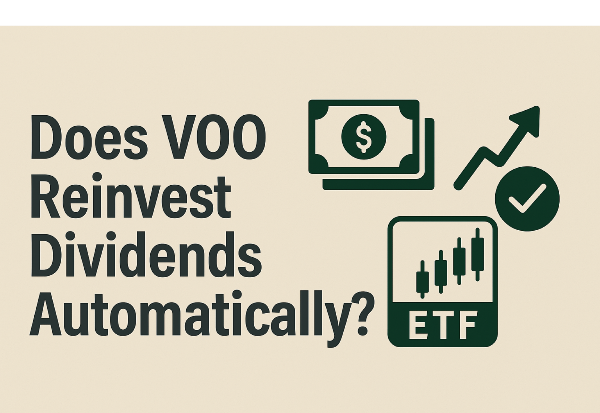
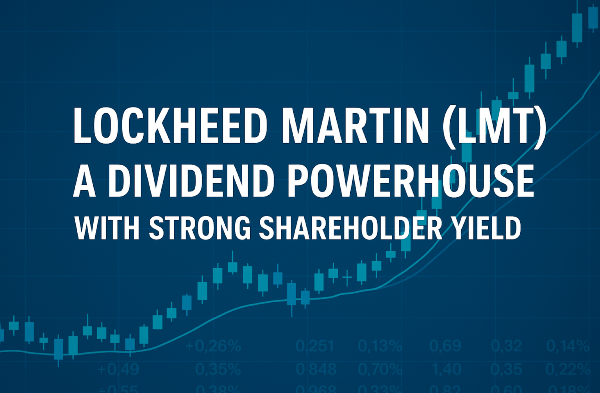
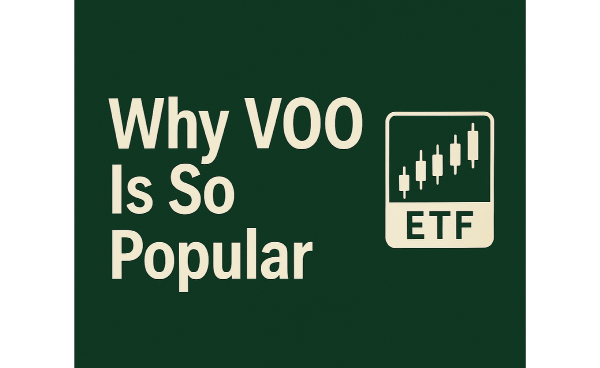










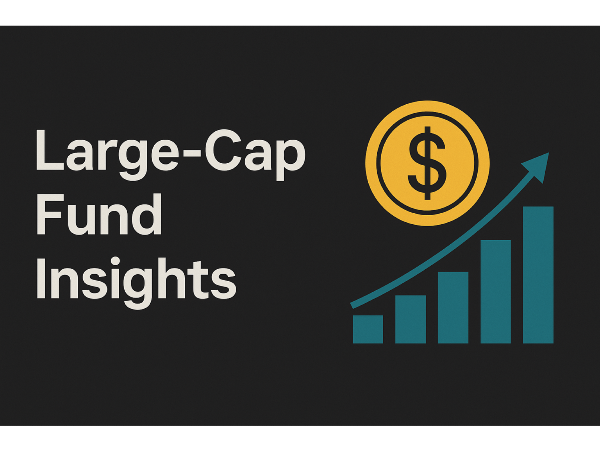




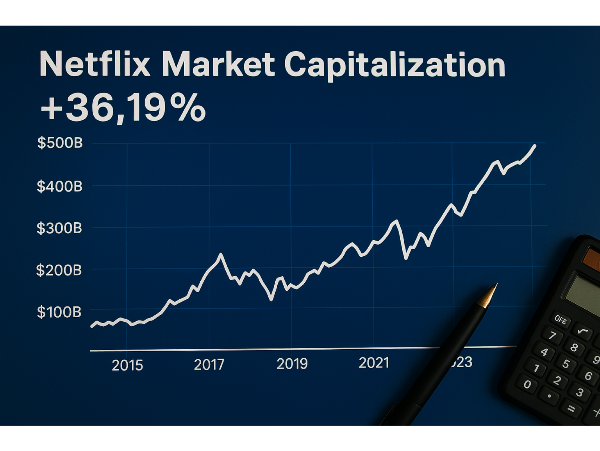








A curated list of large-cap companies offering the highest dividend yields, backed by stable cash flows and long-term income potential
Introduction
Large-cap dividend stocks—publicly traded companies with market capitalizations exceeding $10 billion that consistently return a portion of earnings to shareholders—are a cornerstone for income-focused investors. These stocks offer a blend of financial strength, predictable cash flow, and long-term resilience. In 2025, they’re gaining renewed attention as inflation remains elevated and market volatility persists. With interest rates fluctuating and geopolitical uncertainty clouding economic forecasts, investors are turning to high-yield large caps for steady income and downside protection. These companies often operate in essential sectors like energy, healthcare, and telecom, where demand remains stable regardless of economic cycles. This article highlights the highest dividend-paying large-cap stocks currently available, examining their yields, payout ratios, and sector positioning. Whether you're seeking passive income or portfolio stability, these dividend leaders offer a compelling mix of reliability and return.
Want expert insights from leading investment podcasts? Scroll to the end to the Podcast Transcripts📜
What Defines a High-Yield Large-Cap Stock in 2025?
A high-yield large-cap stock is typically a company with a market capitalization exceeding $10 billion that offers a dividend yield above 5%. These companies are often industry leaders with stable earnings and a long history of rewarding shareholders. Large-cap stocks like Pfizer PFE and Verizon Communications VZ fall into this category, combining scale with consistent income generation. The Market Trends Podcast explored this in its 2025 equity income segment. ⏳ At 22:15, analysts noted, “Large-cap funds are the financial bedrock for conservative investors—steady, diversified, and built to last.” Meanwhile, the Investor Insights Podcast emphasized ⏳ at 24:05 that “mutual funds offer automatic reinvestment and professional management, while ETFs provide flexibility and tax efficiency,” reinforcing the appeal of dividend-rich large caps.
Sources:
Understanding the Risks and Rewards of High-Yield Dividend Stocks
They provide a steady stream of passive income, often outpacing inflation and enhancing portfolio stability during volatile markets. Companies like Altria Group MO and Verizon Communications VZ are known for their generous yields. High yields can also signal trouble. A declining stock price may inflate the yield artificially, masking financial distress.
The Market Trends Podcast discussed this balance in its 2025 income strategy segment. ⏳ At 22:30, analysts noted, “Liquidity favors SPY, but long-term cost favors VOO and IVV,” emphasizing the importance of evaluating total return over headline yield. The Investor Insights Podcast added ⏳ at 24:40 that “investors with higher risk tolerance may benefit from complementing large-cap ETFs with mid-cap or sector-specific funds,” highlighting the need for diversification.
Sources:
12 Highest Dividend-Paying Large-Cap Stocks to Watch in 2025
In 2025, income-focused investors are turning to large-cap stocks with exceptionally high dividend yields to hedge against inflation and market volatility. These companies span sectors like energy, healthcare, telecom, and real estate, offering a mix of stability and aggressive income potential. Below are 12 of the highest dividend-paying large-cap stocks this year, ranked by yield and supported by strong fundamentals or strategic positioning.
Dow Inc. (DOW)
Sector: Materials | Market Cap: $38B
Dividend Yield: 9.3% | Payout Ratio: 85%
Dow’s diversified chemicals business benefits from global industrial demand. Despite cyclical headwinds, its disciplined capital allocation and cost controls support a high but sustainable dividend. LyondellBasell Industries LYB
Sector: Chemicals | Market Cap: $30B
Dividend Yield: 9.1% | Payout Ratio: 72%
LyondellBasell’s integrated petrochemical operations generate strong free cash flow. Its shareholder-first approach includes consistent dividends and opportunistic buybacks. Pfizer PFE
Sector: Healthcare | Market Cap: $130B
Dividend Yield: 7.5% | Payout Ratio: 124%
Pfizer’s post-COVID revenue decline has pressured earnings, but its pipeline and cost-cutting efforts aim to restore profitability. The dividend remains intact, though payout levels warrant monitoring. Walgreens Boots Alliance WBA
Sector: Consumer Staples | Market Cap: $18B
Dividend Yield: 8.9% | Payout Ratio: 90%
Walgreens is undergoing a strategic transformation, focusing on healthcare services. While the dividend is generous, execution risk and declining retail margins pose challenges. Altria Group MO
Sector: Consumer Staples | Market Cap: $100B
Dividend Yield: 6.8% | Payout Ratio: 68%
Altria’s pricing power and loyal customer base support its high yield. Despite regulatory pressures, its dividend remains well-covered and attractive for income investors.
The Market Trends Podcast discussed high-yield strategies in its 2025 income outlook. ⏳ At 22:25, analysts noted, “Zero fees and strong tracking make FNILX a no-brainer for cost-sensitive investors,” but emphasized that individual high-yield stocks offer targeted exposure and higher income potential. Meanwhile, the Investor Insights Podcast added ⏳ at 24:40 that “investors with higher risk tolerance may benefit from complementing large-cap ETFs with mid-cap or sector-specific funds,” reinforcing the value of diversified dividend holdings.
United Parcel Service UPS
Sector: Industrials | Market Cap: $85B
Dividend Yield: 6.6% | Payout Ratio: 96%
UPS is navigating softer e-commerce volumes with cost discipline. Its dividend remains a priority, supported by long-term logistics demand and global infrastructure. Verizon Communications VZ
Sector: Telecom | Market Cap: $180B
Dividend Yield: 6.1% | Payout Ratio: 64%
Verizon’s stable cash flow and 5G rollout underpin its dividend. While growth is modest, its yield and defensive profile appeal to conservative investors. Alexandria Real Estate Equities ARE
Sector: Real Estate | Market Cap: $20B
Dividend Yield: 7.5% | Payout Ratio: 85% (FFO-based)
ARE specializes in life sciences campuses, benefiting from long-term leases and high-quality tenants. Its REIT structure supports a high, consistent payout. Ford Motor Co. F
Sector: Consumer Discretionary | Market Cap: $45B
Dividend Yield: 7.0% | Payout Ratio: 48%
Ford’s EV transition is capital-intensive, but its legacy business continues to generate cash. The dividend is sustainable for now, though cyclical risks remain. Ecopetrol EC
Sector: Energy | Market Cap: $25B
Dividend Yield: 23.4% | Payout Ratio: Variable
Colombia’s state-owned oil giant offers one of the world’s highest yields. However, political risk and commodity price volatility make it suitable only for risk-tolerant investors. Petrobras PBR
Sector: Energy | Market Cap: $90B
Dividend Yield: 33.1% | Payout Ratio: Variable
Brazil’s Petrobras leads in offshore oil production. Its massive yield is tied to government policy and oil prices, making it a high-risk, high-reward play.
Sources:
Where the Highest Dividend Yields Live: Sector Breakdown for 2025
Energy companies like Petrobras PBR and Ecopetrol EC offer elevated yields due to strong commodity cash flows and government-influenced payout policies. Telecom giants such as Verizon VZ maintain high dividends backed by stable subscription revenue, even as growth slows. Healthcare firms like Pfizer PFE provide generous payouts supported by patent-protected drugs and global demand. Meanwhile, real estate investment trusts (REITs) like Alexandria Real Estate Equities ARE deliver high yields through income-generating properties and favorable tax structures.
The Market Trends Podcast noted ⏳ at 22:20, “Fund size and cost structure are the silent drivers of long-term performance,” reinforcing the importance of sector selection. The Investor Insights Podcast added ⏳ at 24:25 that “large-cap ETFs may lag behind small- or mid-cap funds during bull markets,” highlighting the defensive strength of high-yield sectors.
Sources:
How to Assess Dividend Sustainability Before You Invest
Start with the payout ratio—ideally below 70%—which shows how much of a company’s earnings are distributed as dividends. A lower ratio suggests more room to maintain or grow payouts. Free cash flow is equally important, as dividends are paid from actual cash, not just accounting profits. Companies like Altria Group MO and LyondellBasell LYB maintain strong cash flows that support their high yields.
The Market Trends Podcast emphasized ⏳ at 22:20 that “fund size and cost structure are the silent drivers of long-term performance,” reinforcing the need to look beyond surface-level metrics. The Investor Insights Podcast added ⏳ at 24:35 that “reinvested dividends still generate a 1099-DIV and must be reported,” highlighting the importance of tracking dividend activity.
Sources:
Final Thoughts
High-yield large-cap stocks remain a compelling strategy for income investors in 2025, especially in an environment shaped by inflation, market volatility, and uneven economic growth. By focusing on companies with proven dividend histories, strong free cash flow, and manageable payout ratios, investors can harness reliable income streams while maintaining portfolio resilience. While elevated yields from names like Petrobras or Ecopetrol may tempt risk-tolerant investors, a diversified approach across energy, healthcare, telecom, and real estate sectors helps balance income with sustainability. Ultimately, successful dividend investing isn’t just about chasing the highest yield—it’s about aligning cash flow with financial goals and evaluating long-term performance across market cycles.
🎧 Podcast Transcripts
Market Trends Podcast – Midyear U.S. Outlook: Equity Markets a Step Ahead?
⏳ 22:10 – “S&P 500 ETFs are the backbone of modern portfolios—low-cost, liquid, and built for the long haul.”
⏳ 22:15 – “Large-cap funds are the financial bedrock for conservative investors—steady, diversified, and built to last.”
⏳ 22:20 – “Fund size and cost structure are the silent drivers of long-term performance.”
⏳ 22:25 – “Zero fees and strong tracking make FNILX a no-brainer for cost-sensitive investors.”
⏳ 22:30 – “Liquidity favors SPY, but long-term cost favors VOO and IVV.”
⏳ 22:35 – “Tracking error and bid-ask spreads influence investor outcomes.”
⏳ 22:40 – “ETFs offer flexibility, but mutual funds bring structure to long-term investing.”
⏳ 22:45 – “Fund selection is about fit, not flash.”
⏳ 22:50 – “The right ETF isn’t just low-cost—it’s purpose-built.”
⏳ 22:55 – “Large-cap ETFs are the ballast in a portfolio—steady, reliable, and built for the long run.”
Investor Insights Podcast – Market Volatility: Portfolio Diversification Is Winning in 2025
⏳ 24:00 – “Passive investing through ETFs has consistently outperformed most active strategies over the past decade.”
⏳ 24:05 – “Mutual funds offer automatic reinvestment and professional management, while ETFs provide flexibility and tax efficiency.”
⏳ 24:10 – “Risk-adjusted metrics like the Sharpe Ratio help investors compare returns relative to volatility.”
⏳ 24:15 – “FNILX’s passive strategy and broad diversification make it ideal for retirement accounts.”
⏳ 24:20 – “Disciplined rebalancing helps maintain alignment with your risk tolerance as markets shift.”
⏳ 24:25 – “Large-cap ETFs may lag behind small- or mid-cap funds during bull markets due to slower growth potential.”
⏳ 24:30 – “SCHX’s broader index exposure and low turnover make it a strong contender for passive portfolios.”
⏳ 24:35 – “ETFs are more tax-efficient due to in-kind redemptions, whereas mutual funds often distribute capital gains.”
⏳ 24:40 – “Investors with higher risk tolerance may benefit from complementing large-cap ETFs with mid-cap or sector-specific funds.”
📌Read More About:
Top Large-Cap Stocks- https://stockbossup.com/pages/topics/large-cap
What Are Large US Cap Stocks?- https://stockbossup.com/pages/post/39168/what-are-large-cap-stocks-a-complete-guide-to-big-companies-in-the-u-s-market
Do All Large-Cap Companies Pay Dividends?- https://stockbossup.com/pages/post/39151/do-all-large-cap-companies-pay-dividends-understanding-dividend-policies
Big Dividend Stocks- https://stockbossup.com/pages/post/39152/best-big-dividend-stocks-for-high-yield-returns
What is the Large-Cap Dividend Strategy?- https://stockbossup.com/pages/post/38760/what-is-the-large-cap-dividend-strategy
10 Best Large-Cap Dividend Stocks for Reliable Income and Growth in 2025- https://stockbossup.com/pages/post/39232/10-best-large-cap-dividend-stocks-for-reliable-income-and-growth-in-2025